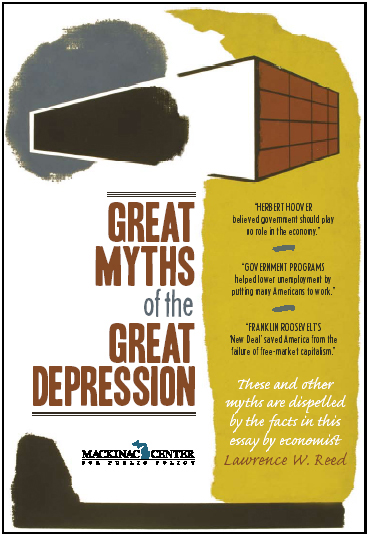Note: This is my column from Southern PHC Magazine. Normally, I would link to the article, but the magazine doesn't post articles online so I'm reprinting here.
The only constant in the world is change. Regardless of our desires, the world changes. Our industry changes. Technology changes. When your world is changing around you, it’s necessary for you to change with it. Here are my top tech resolutions for the coming year that will allow you to keep up.
1. Line Extension
The PHC industry’s products are evolving. New products are emerging that present contractors with more revenue opportunities. The opportunities are all the greater since many contractors avoid new technology until it becomes tried and true, which limits the competitive field for the innovators. Resolve to investigate and add a new product to your offering and actively market it. The products do not even need to be new, just new to your company. Examples include waterless urinals, dual flush toilets, anti-scald faucets, electronic faucets, tankless water heaters, solar water heaters, solar panels, geothermal heat pumps, ductless mini-splits, zoning systems, energy recovery ventilators, dehumidifiers, fireplace inserts, wood stoves, stand-by generators, whole house surge suppressors, etc.
2. Service Extension
Your line extension opportunities are not limited to products. Resolve to investigate new service opportunities by attending one seminar or one conference focused on a service you do not currently offer. It can be as simple as a plumbing company adding HVAC or vice versa. Or, it could adding light commercial or a commercial contractor moving into the residential market. Other possibilities include jetting, sewer line cameras, infrared thermographic analysis, duct cleaning, remote system monitoring, radiant barriers, duct sealing, duct balancing, and building science.
3. Tools
Contractors love tools, but mostly tools like Sawzalls, wrenchs, gauges, and vacuum pumps. Spice up your tool collection to enhance your service personnel’s diagnostic capabilities while wowing the customer. Resolve to add one new state-of-the-art tool from your trade. Examples include digital anemometers, thermographic cameras, the previously mentioned jetters and sewer line cameras, non-contact infrared thermometers, infiltrometers, duct blasters, tapeless measures, non-destructive moisture meters, gas detectors, combustion analyzers, carbon monoxide detectors, dye based furnace crack detection systems like Visible Defects, flow hoods, digital manometers, video borescopes, ultrasonic leak inspections, electronic metal and rebar locators, and sound level meters.
4. Information Technology
If your computers and/or software are more than three years old, they’re antiquated. Resolve to upgrade your information technology. While Vista was problematic, Windows 7 appears to be a winner. Consider adopting the new operating system. Look into inexpensive netbooks for salespeople and even service personnel. Evaluate your business (software) system. If you haven’t kept up with the latest upgrades and revisions, resolve to start.
5. Handheld Technology
While few contractors are still using a Motorola Startac flip phone, many have failed to keep up with the latest technology. Today’s upper end phones include text, email, cameras, GPS, 3G web surfing, and a host of custom applications that can improve your efficiency and your team’s efficiency. Resolve to investigate an iPhone, Blackberry, Palm Tre, Google Android, or other smart phone and purchase the one that appeals to you most.
6. Website
Surprisingly, many contractors still lack a website. And many with a site offer little more than brochureware or follow a generic manufacturer template, which commoditizes the site. Resolve to create a website if you lack one. Resolve to make it distinctive. Resolve to secure your own URL. Resolve to tie your business email to the URL and avoid the use of AOL, hotmail, gmail, Yahoo, or other free mail sites that scream you lack professionalism.
7. Search
People are increasingly turning away from the yellow pages and to their computers when looking for service companies with “local” search taking on added importance. The search engines are stressing local search, which is free, but you must adhere to the search engine requirements. Resolve to list your company with “local business centers” on each of the major search engines. Further resolve to study search engine requirements and tune your site accordingly. Finally, resolve to start a search engine marketing campaign, such as Google AdWords.
8. Publish
The Internet has revolutionized publishing. Today, anyone with something to say can publish it to the world. If what is published is interesting enough, the writer will build an audience. The simplest way to publish is to start a blog through Blogger or Wordpress. Tie it into your website and you will also improve your website’s search engine. Resolve to start a blog in 2010 and write about PHC related topics that interest you, offer tips for homeowners, talk about your community, explain life in a small business, and so on.
9. Social Media
As changes in technology affect society as a whole, they similarly affect marketing. While traditional media is losing its effectiveness, new media is on the rise and social media is emerging. The advantage of new media and social media is the reduced cost. Unfortunately, the savings are balanced by the need to invest considerable time. Since this is largely time spent interacting with customers and prospects, the investment is worthwhile. Resolve to establish a Facebook account and company fan page, create a Linked In Account, and start tweeting with Twitter. What do you talk about? Start with alerts about new blog posts.
10. Training
Technology is also revolutionizing training with much of it free or practically free. While you shouldn’t forget the run-of-the-mill trade association meetings, conferences, and trade magazines (especially the one you’re reading now), a wealth of information is available on blogs, podcasts, and online discussion forums. The advantage of the online resources is the searchability and real-time interactivity. For example, every day contractors help other contractors solve problems online through the Service Roundtable’s discussion groups. Resolve in 2010 to seek out industry oriented blogs like ComancheMarketing.com, listen to industry podcasts like the 3 Questions For Small Business podcast (3QuestionsForSmallBusiness.blogspot.com), and join a discussion forum like those hosted at ServiceRoundtable.com.





































